“John F Kennedy Assassination Warren Commission FBI Files” has been added to your cart. View cart
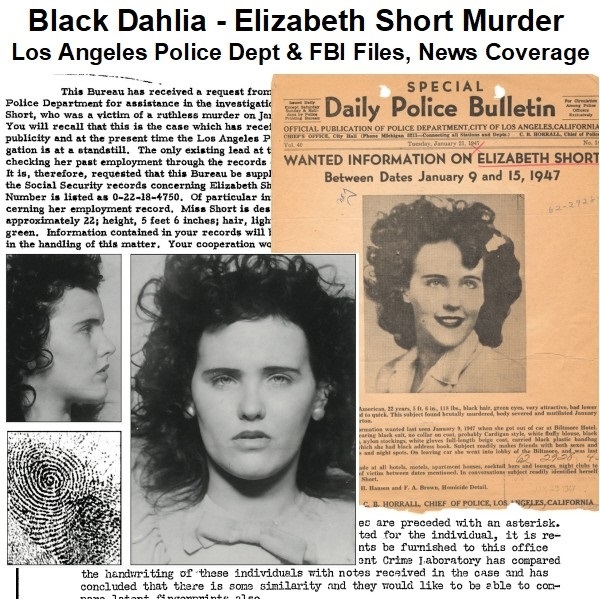
Elizabeth Short (Black Dahlia): Police, FBI Files & Press Reports
$19.50
Category: Criminals Files
Tags: Black Dahlia, Elizabeth Short, fbi, FBI Files
Description
The Black Dahlia: Case Timeline and Characters
1943
- January 1943: Elizabeth Short applies for a job as a clerk at the commissary of the Army’s Camp Cooke in California, leading to her fingerprints being on file with the FBI.
- August 1943 (7 months later): Elizabeth Short is arrested by the Santa Barbara Police Department for underage drinking, resulting in her fingerprints being added to the FBI’s collection a second time.
1947
- January 15, 1947:The dismembered body of Elizabeth Short is discovered in a vacant lot at 3800 Norton Ave, near 39th Street, in the Leimert Park neighborhood of Los Angeles by a mother walking with her young child.
- The Los Angeles Herald is the first newspaper to break the story.
- Los Angeles Herald-Express crime reporter Bevo Means coins the moniker “Black Dahlia” for Elizabeth Short.
- LA Police Department officers Frank Perkins and Will Fitzgerald arrive at the crime scene.
- Early Morning, January 16, 1947:Los Angeles Herald Examiner Assistant Managing Editor Warden Woolard suggests to LAPD Capt. Jack Donahoe that the victim’s fingerprints be transmitted to the FBI using the Examiner’s new soundphoto machine (a primitive fax machine).
- The International News Photo wire service receives the prints via photo transmission from the Examiner.
- The FBI identifies the victim as Elizabeth Short based on her previously filed fingerprints.
- Following Weeks and Months (1947):Sensational news stories, particularly from Hearst’s newspapers, fill Los Angeles newspapers for months. The case is front-page news for 35 days following the discovery of the body.
- Approximately fifty individuals, known as “Confessing Sams,” come forward to confess to the murder.
- Detectives Harry Hansen and Finis Brown, the lead detectives, conduct interviews and make arrests.
- The FBI receives letters from private citizens claiming to know the culprit and memos are sent regarding potential suspects and interviews across the nation.
- Early suspicions lead the FBI to suggest checking students at the University of Southern California Medical School due to the clean dissection of the body.
- Woodrow Guthrie is briefly investigated as a suspect due to sexually explicit letters and tabloid clippings he sent to a woman, but is quickly cleared of the murder. He is prosecuted for sending obscene materials through the mail.
- February 4, 1947: An “Officers Memorandum” written by LAPD officers Frank Perkins and Will Fitzgerald concludes, detailing events from their arrival at the scene to this date.
1950
- Saturday, November 25, 1950: Christine Reynolds surrenders to Oakland police, confessing to the murder of Short, but is quickly dismissed as a suspect due to lack of details about the crime.
1957
- 1957: Newspaper coverage of the Black Dahlia case continues, with full sheet newspaper pages from California and other states like Washington and North Carolina.
1996
- 1996: Former Los Angeles Police Department homicide detective Brian Carr takes purview of the Black Dahlia case. He rules out all previous confessions as serious.
2004
- 2004: A 206-page set of FBI files related to the Elizabeth Short murder is released, heavily redacted.
2016
- 2016: A 211-page set of FBI files, effectively containing the same material as the 2004 release but largely unredacted, is released.
Cast of Characters
- Elizabeth Short (aka “Betty,” “The Black Dahlia”): The 22-year-old victim of the unsolved murder case. Originally from Medford, Massachusetts, she moved to Hollywood seeking an acting career, working odd jobs before her death. Her murder made her one of Los Angeles’s most famous women.
- J. Edgar Hoover: Director of the FBI. Hand-written notations by him appear at the bottom of several FBI memorandums related to the case. He also corresponded with LAPD Chief Clemence B. Horrall regarding fingerprint examinations.
- Captain Jack Donahoe: Chief of the Los Angeles Police Department’s homicide division at the time of the murder.
- Warden Woolard: Assistant Managing Editor for the Los Angeles Herald Examiner. He suggested using the newspaper’s soundphoto machine to transmit Short’s fingerprints to the FBI, which led to her swift identification.
- Bevo Means: Crime reporter for the Los Angeles Herald-Express. He is credited with coining the famous moniker “Black Dahlia” for Elizabeth Short.
- Officer Frank Perkins: An LAPD officer involved in the initial investigation of the murder. He co-authored an “Officers Memorandum” detailing early events at the crime scene.
- Officer Will Fitzgerald: An LAPD officer involved in the initial investigation of the murder. He co-authored an “Officers Memorandum” detailing early events at the crime scene.
- Detective Harry Hansen: One of the lead detectives assigned to the Elizabeth Short murder case for the LAPD.
- Detective Finis Brown: One of the lead detectives assigned to the Elizabeth Short murder case for the LAPD.
- Brian Carr: Former Los Angeles Police Department homicide detective who took purview of the Black Dahlia case in 1996. He ruled out all previous confessions as serious.
- Peter Vetcher: An acquaintance of Elizabeth Short who had a dalliance with her in Los Angeles. He was interviewed by the FBI and provided details about his time with her.
- Christine Reynolds: A woman who surrendered to Oakland police on November 25, 1950, confessing to the murder. She was quickly dismissed as a suspect due to her inability to provide details about the crime.
- David Rivenburgh: A suspected individual in the case, documents regarding whom are included in the LAPD files.
- Woodrow Wilson Guthrie: American singer-songwriter, famous for “This Land Is Your Land.” He drew police attention as a suspect due to sexually explicit letters he sent to a woman, but was quickly cleared of the murder itself. He was prosecuted for sending obscene materials through the mail.
- Chief Clemence B. Horrall: Chief of the Los Angeles Police Department. He received a letter from FBI Director J. Edgar Hoover regarding fingerprint examination results.
Related products
-
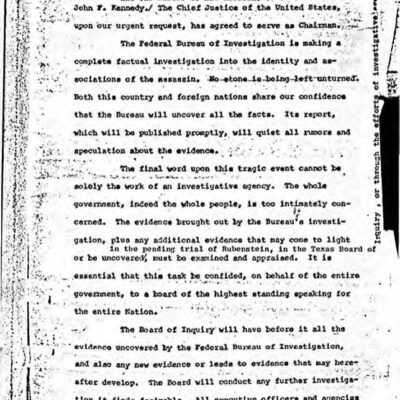

John F Kennedy Assassination Warren Commission FBI Files
$19.50 Add to Cart -
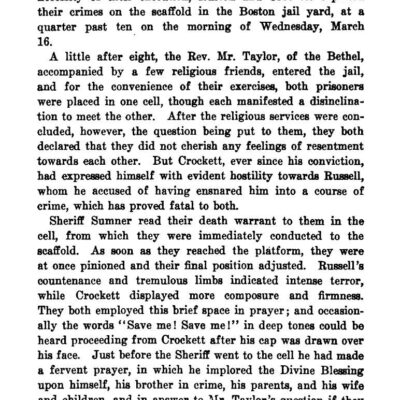

American Criminal Trials Reports (1659 to 1913)
$19.50 Add to Cart -
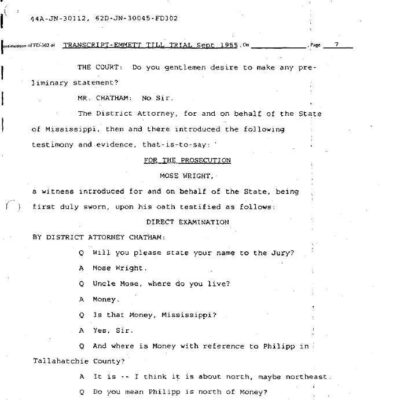
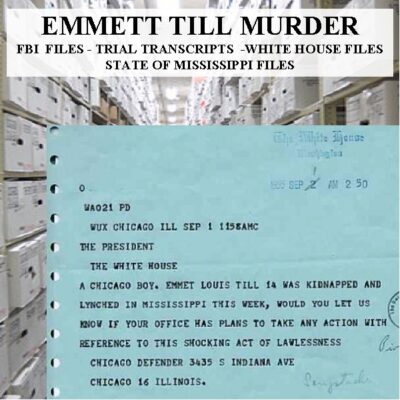
Emmett Till Murder: FBI, White House, Mississippi Files & News Articles
$19.50 Add to Cart -
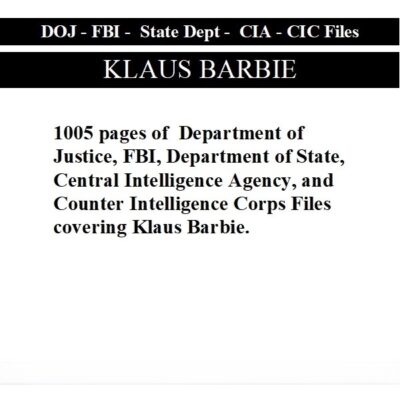
Klaus Barbie: Department of Justice – FBI – Counter Intelligence Corps Files
$19.50 Add to Cart